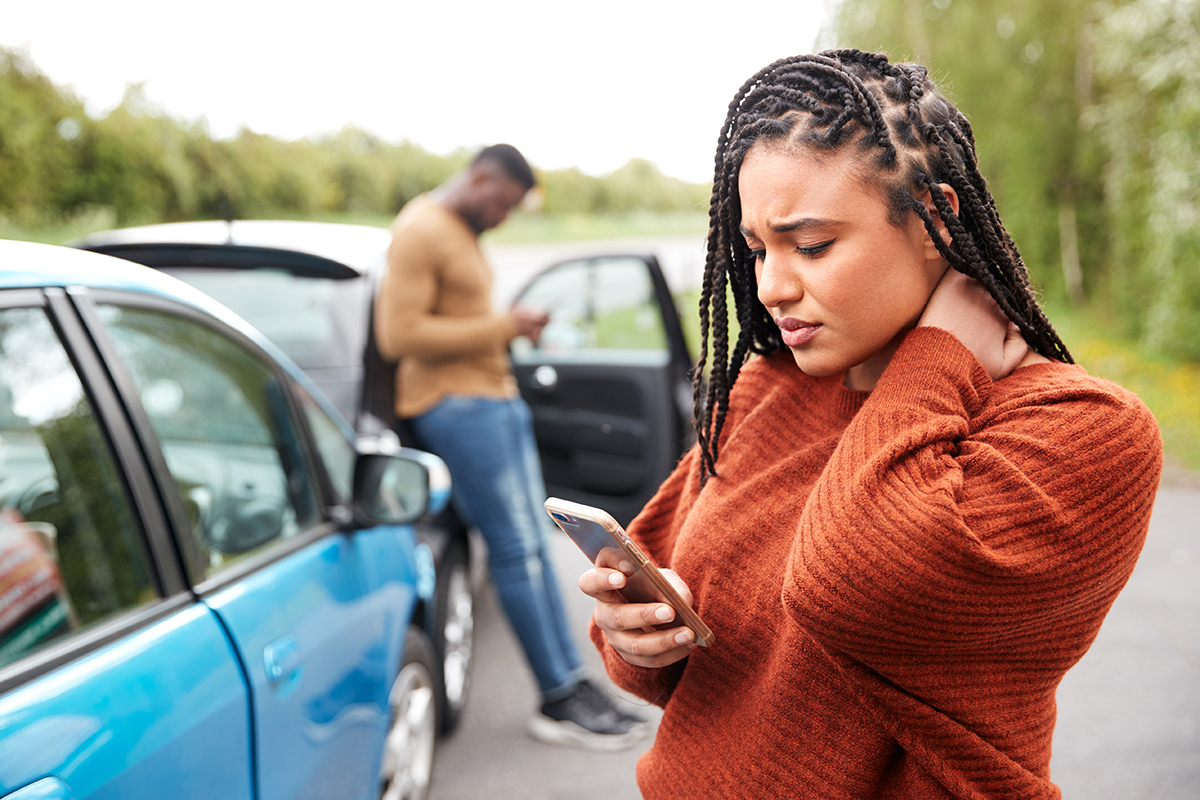by Wayne Parsons
BOOM! Car crash. What next?
If possible, move the cars to a safe place. Get out of the vehicle because gasoline is a bomb waiting for a spark. A vehicle can explode in a few seconds or minutes. Call 911. Check for injuries, and attend to the injured.
For each driver, get the name, address, phone, insurance company and policy number. Take a photo of insurance cards and any damage to the vehicles. If there are skid marks and you can do so safely, take pictures. Do not go onto the highway.
Wait for the police and the ambulance. Exchange information, but think before you talk. Do not argue, apologize or accuse. Instead, cooperate with the police and remember that what is said at the scene of the crash may be used against you in the future. Telling the truth and not exaggerating is always the best practice, and less is more, as they say.
Get the names, addresses and telephone numbers of any bystanders who witnessed the crash. The police often miss eye-witnesses. Keep a pen and a notepad in the car.
Make notes about the crash. Write down what your body hit inside the car. Pain can be small at the scene due to shock or other reasons, and a week later, it may be the main injury. Knees, head, hands, shoulders and hips can strike things in the car. If it is not mentioned until a week after the crash, the insurance company will not pay for that injury. Be aware of your pain and injuries at the scene and tell medical personnel about all of those things.
At home, look at the Declarations Page for your auto insurance policy. Know what coverages you have before you get into a car crash.
As soon as possible, report the crash to the insurance company for the car you were in. Most insurance companies have online websites where an insured person can report an incident and open a claim. If you get a lawyer, they will deal with the insurance, keeping you out of it.
Hospitals and doctors will ask for health and vehicle insurance information. “No-Fault” or “Personal Injury Protection” or “PIP” on the car you were in will usually pay for ambulance fees, medical care, prescriptions, lost wages, home care expenses and even funeral expenses. The amount of PIP coverage can be small in some states, such as Hawai‘i, where it is $20,000 or less. This is different from Bodily Injury coverage of the at-fault drive. For all losses from the at-fault driver, the injured can later recover, but that may require a lawsuit to prove fault.
The PIP coverages pay immediately after the crash for those in the respective cars. The injured person must submit a PIP claim form. Carelessly worded statements can cause problems later on with a claim against the at-fault driver. Note that there may be time limitations in filing PIP claims. The same is true for claims against the at-fault driver for Bodily Injury claims. Be aware of the time limitations for the state where the crash occurred. The laws of each state vary. Failure to file within the time limit can result in the claim being forever barred.
Thirteen states require no-fault/PIP coverage: Florida, Hawaii, Kansas, Massachusetts, Michigan, Minnesota, New Jersey, New York, North Dakota, Oregon, Pennsylvania, and Utah. Of these states, 11 are “no-fault” states meaning that medical expenses are paid at the outset, without regard to fault. PIP coverage is also available but optional in seven additional states and the District of Columbia.
If PIP is available in your state but not required, it is a smart investment to purchase as much insurance as possible. It is not expensive.
The at-fault driver is responsible for paying all economic losses, like medical bills, lost wages and other expenses and intangible injuries like pain and suffering, disfigurement and the like. Therefore, a lawsuit is usually required and a lawyer will be necessary.
Most drivers have minimal Bodily Injury coverage, which is the most you can recover for your injuries. In Hawai‘i, for instance, the minimum coverage is $20,000. In many tragic car crashes, a family is faced with millions of dollars in medical bills and life-long disability, plus pain and suffering, but can only recover $20,000 from the person at fault.
Purchasing the maximum amounts of underinsured motorist protection (UIM) and uninsured motorist protection (UM) is wise. If the at-fault driver has no insurance or inadequate insurance, the UIM and UM coverages can protect them from financial tragedy. Therefore, buying $1 million in UM and UIM is wise protection. Also, it is very important to buy “stacking” of UM/UIM insurance if more than one of your cars is insured. Then you can collect on each policy.
Hiring a lawyer after a crash will make sure that things are done right for you.
Hire a contingent fee personal injury lawyer. You pay nothing upfront, and the lawyer only gets paid if you recover money from the at-fault driver or from your own UM/UIM coverages. The lawyer will help with everything. People who try to do it themselves usually make mistakes that the lawyer, later on, cannot undo.
The best lawyers are members of the Injury Board (injuryboard.org), a national association of highly ethical lawyers who are leaders in personal injury law. In addition, the lawyer must be a member of the American Association for Justice (justice.org) and the state affiliate, such as the Hawai‘i Association for Justice (justicehawaii.com).








Leave A Comment